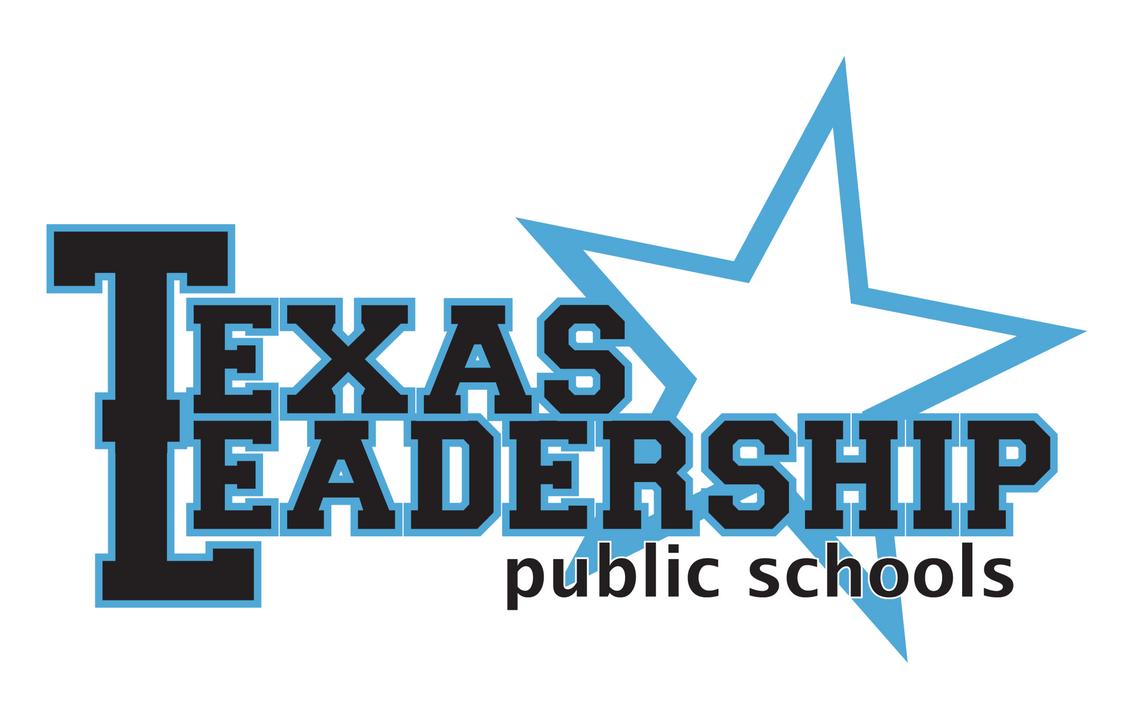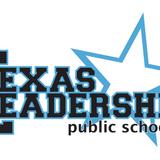Serving 1,451 students in grades Kindergarten-12, Texas Leadership Of San Angelo ranks in the bottom 50% of all schools in Texas for overall test scores (math proficiency is bottom 50%, and reading proficiency is bottom 50%).
The percentage of students achieving proficiency in math is 33% (which is lower than the Texas state average of 41%). The percentage of students achieving proficiency in reading/language arts is 52% (which is higher than the Texas state average of 51%).
The student:teacher ratio of 16:1 is higher than the Texas state level of 14:1.
Minority enrollment is 72% of the student body (majority Hispanic), which is lower than the Texas state average of 75% (majority Hispanic).
Quick Stats (2025)
- School Type: Charter School
- Grades: Kindergarten-12
- Enrollment: 1,451 students
- Student:Teacher Ratio: 16:1
- Minority Enrollment: 72%
- Graduation Rate: ≥95% (Top 20% in TX)
- Overall Testing Rank: Bottom 50%
- Math Proficiency: 33% (Btm 50%)
- Reading Proficiency: 52% (Top 50%)
- Science Proficiency: 30% (Btm 50%)
- Source: National Center for Education Statistics (NCES), TX Dept. of Education
Top Rankings
Texas Leadership Of San Angelo ranks among the top 20% of public schools in Texas for:
Category
Attribute
Graduation Rate
School Overview
Texas Leadership Of San Angelo's student population of 1,451 students has declined by 58% over five school years.
The teacher population of 89 teachers has declined by 57% over five school years.
School Type
Grades Offered
Grades Kindergarten-12
Total Students
1,451 students
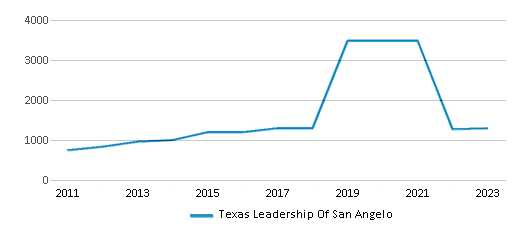
Gender %
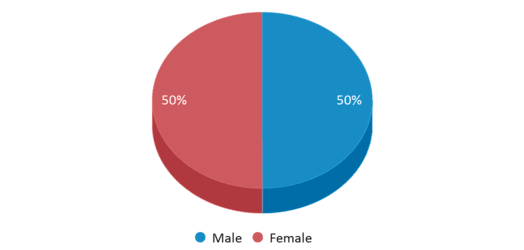
Total Classroom Teachers
89 teachers
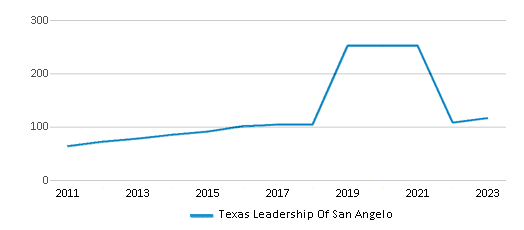
Students by Grade

School Rankings
Texas Leadership Of San Angelo ranks within the bottom 50% of all 8,188 schools in Texas (based off of combined math and reading proficiency testing data).
The diversity score of Texas Leadership Of San Angelo is 0.51, which is less than the diversity score at state average of 0.64. The school's diversity has stayed relatively flat over five school years.
Overall Testing Rank
#4273 out of 8188 schools
(Bottom 50%)
(Bottom 50%)
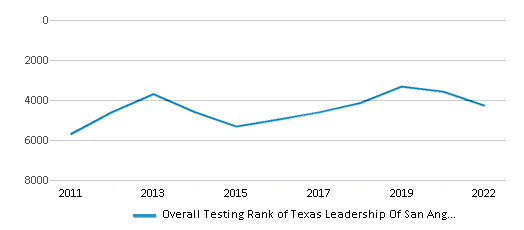
Math Test Scores (% Proficient)
33%
41%
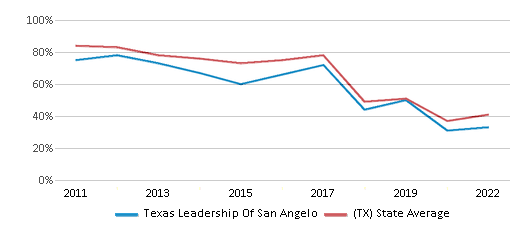
Reading/Language Arts Test Scores (% Proficient)
52%
51%

Science Test Scores (% Proficient)
30%
46%

Student : Teacher Ratio
16:1
14:1
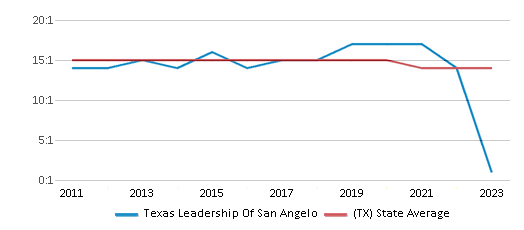
American Indian
n/a
n/a
Asian
2%
6%
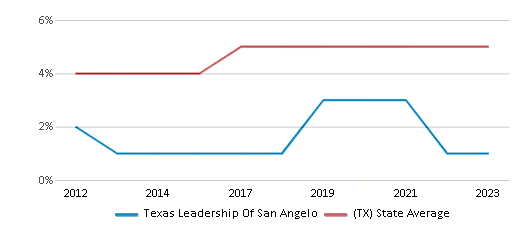
Hispanic
64%
53%
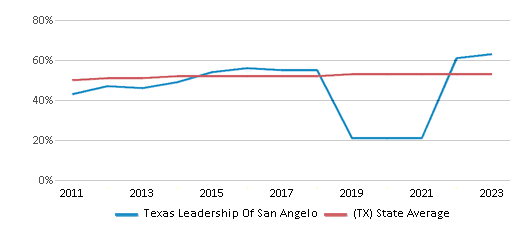
Black
3%
13%
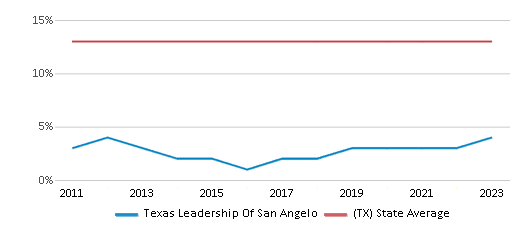
White
28%
25%
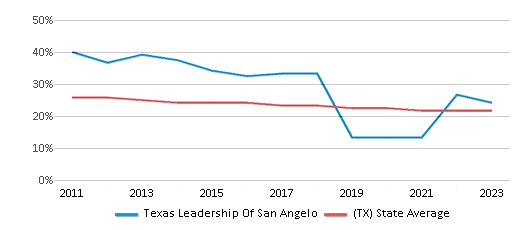
Hawaiian
n/a
n/a
Two or more races
3%
3%
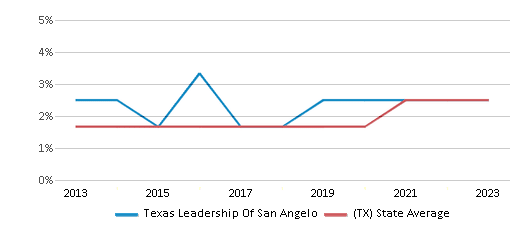
All Ethnic Groups
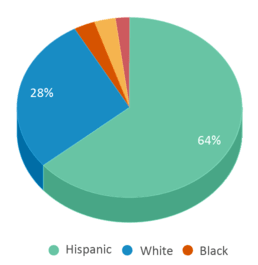
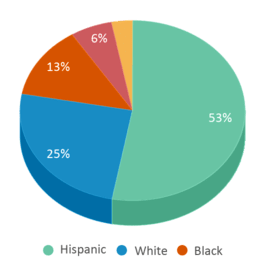

Graduation Rate
≥95%
90%
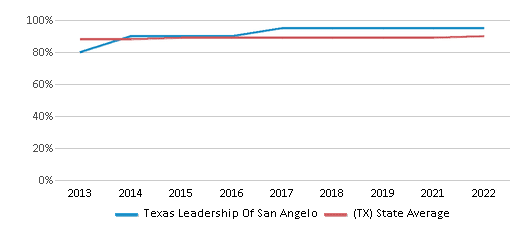
Participates in the National School Lunch Program (NSLP)
Yes
Eligible for Free Lunch
41%
57%
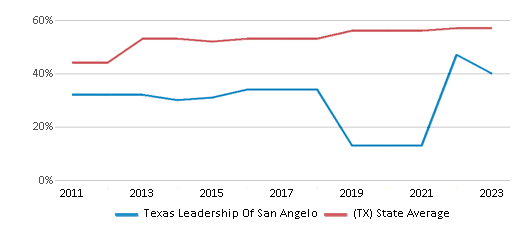
Eligible for Reduced Lunch
11%
5%

School Statewide Testing
School District Name
Sports
Total Sports Offered
12 sports
Sports
Baseball, Basketball, Cheering, Cross Country, Cross Country Running, Football, Softball, Tennis, Track, Track and Field, Volley Ball, Weightlifting
Source: National Center for Education Statistics (NCES), TX Dept. of Education
School Notes
- Texas Leadership Public Schools is a non-profit network of free, public charter schools that is open to all students. Having its start in 2009 with 600 students in one city, has grown to over 3,000 students in 5 cities including San Angelo, Midland, Abilene, Arlington and Cedar Hill, Texas (newest campus). Texas Leadership lives its mission of creating an environment that develops people and instills quality education. Its heart is to see students become leaders in all areas of life; and to see them excel from the classroom to beyond.
Profile last updated: 02/09/2025
Frequently Asked Questions
What is Texas Leadership Of San Angelo's ranking?
Texas Leadership Of San Angelo is ranked #4273 out of 8,188 schools, which ranks it among the bottom 50% of public schools in Texas.
What schools are Texas Leadership Of San Angelo often compared to?
Texas Leadership Of San Angelois often viewed alongside schools like Bonham Elementary School by visitors of our site.
What percent of students have achieved state testing proficiency in math and reading?
33% of students have achieved math proficiency (compared to the 41% TX state average), while 52% of students have achieved reading proficiency (compared to the 51% TX state average).
What is the graduation rate of Texas Leadership Of San Angelo?
The graduation rate of Texas Leadership Of San Angelo is 95%, which is higher than the Texas state average of 90%.
How many students attend Texas Leadership Of San Angelo?
1,451 students attend Texas Leadership Of San Angelo.
What is the racial composition of the student body?
64% of Texas Leadership Of San Angelo students are Hispanic, 28% of students are White, 3% of students are Black, 3% of students are Two or more races, and 2% of students are Asian.
What is the student:teacher ratio of Texas Leadership Of San Angelo?
Texas Leadership Of San Angelo has a student ration of 16:1, which is higher than the Texas state average of 14:1.
What grades does Texas Leadership Of San Angelo offer ?
Texas Leadership Of San Angelo offers enrollment in grades Kindergarten-12
What school district is Texas Leadership Of San Angelo part of?
Texas Leadership Of San Angelo is part of Texas Leadership School District.
School Reviews
Review Texas Leadership Of San Angelo. Reviews should be a few sentences in length. Please include any comments on:
- Quality of academic programs, teachers, and facilities
- Availability of music, art, sports and other extracurricular activities
Recent Articles

What Is A Charter School?
Explore the world of charter schools in this comprehensive guide. Learn about their history, how they operate, and the pros and cons of this educational innovation. Discover key facts about charter schools, including admission policies, demographics, and funding, as well as what to look for when considering a charter school for your child.

10 Reasons Why High School Sports Benefit Students
Discover the 10 compelling reasons why high school sports are beneficial for students. This comprehensive article explores how athletics enhance academic performance, foster personal growth, and develop crucial life skills. From improved fitness and time management to leadership development and community representation, learn why participating in high school sports can be a game-changer for students' overall success and well-being.

February 05, 2025
Understanding the U.S. Department of Education: Structure, Impact, and EvolutionWe explore how the Department of Education shapes American education, from its cabinet-level leadership to its impact on millions of students, written for general audiences seeking clarity on this vital institution.


